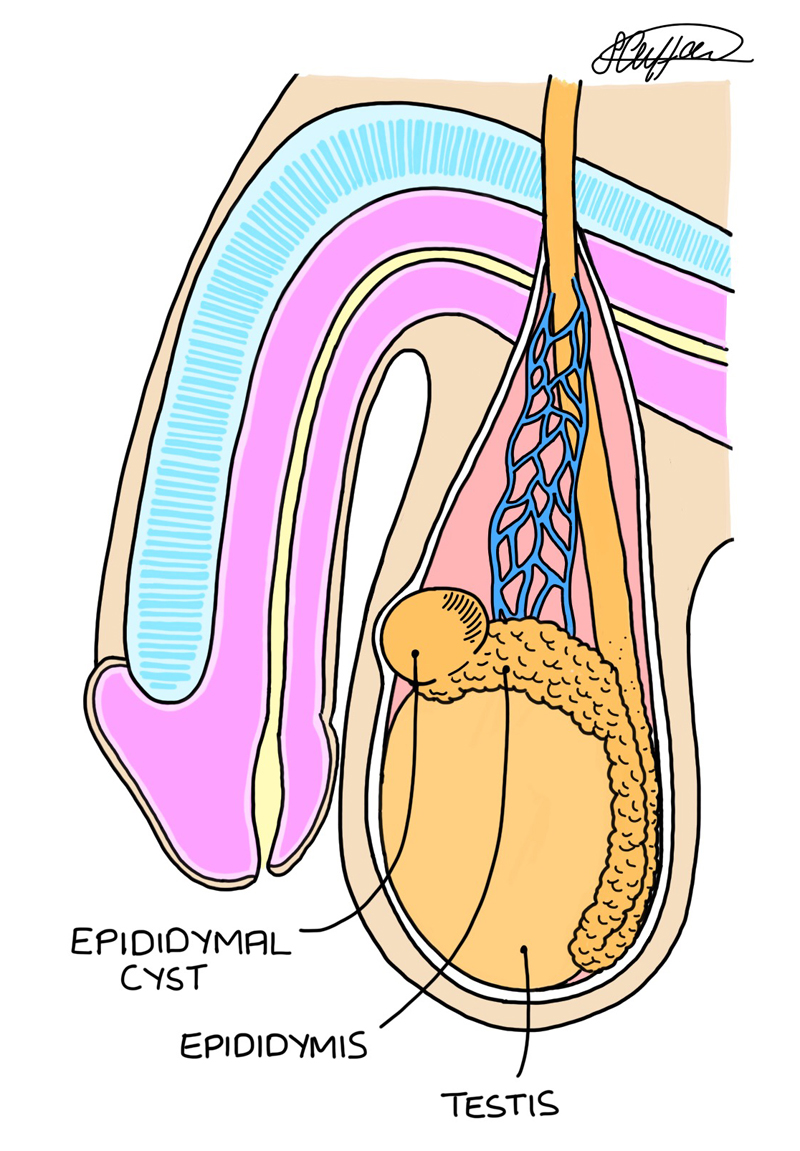Surgical Treatment for Cysts Near the Testicle
An epididymal cyst is a benign (non-cancerous) fluid-filled swelling that forms in the epididymis—the coiled tube located at the back of the testicle. These cysts are common, especially in men around 40 years of age, and may affect one or both testicles.
Although typically harmless, some cysts may become large, painful, or bothersome. In such cases, surgical removal may be considered.
Who Is Suitable for Surgery?
You may be a candidate for epididymal cyst removal if you:
- Experience pain, discomfort, or swelling in the scrotum
- Have a large cyst that causes cosmetic concerns or inconvenience
- Have had a previous cyst aspirated and it has returned

Benefits of Epididymal Cyst Removal
- Long-term resolution of symptoms
- Low recurrence rate compared to aspiration or injection
- Minimally invasive, safe, and straightforward procedure
- Quick recovery and reliable outcomes
How the Procedure Is Performed
- Performed under general anaesthetic
- Takes approximately 30–45 minutes
- A small incision is made in the scrotum
- The cyst is carefully separated from nearby structures and removed
- The wound is closed using dissolvable sutures that do not require removal
What to Expect After Surgery
- This is a day procedure — most patients go home the same day
- Supportive underwear is recommended for comfort and to reduce swelling
- Light activities may be resumed in 3–4 days
- Avoid heavy lifting or strenuous activity for at least 2 weeks
- Bruising, swelling, and mild discomfort are common and settle in a few days
- A minor fluid discharge from the wound may occur and is usually temporary
- Risk of infection or scrotal haematoma (blood clot) is low but possible
Post-Operative Care Instructions
What to Expect:
- Mild bruising or bleeding may occur; wear a light pad in underwear if needed
- Swelling may last several weeks
- Use supportive underwear to reduce swelling and discomfort
- You may take paracetamol or ibuprofen for pain relief
Wound Care:
- You may shower after 24 hours, but avoid bathing or swimming for one week
- Keep the wound clean and dry
Returning to Activities
- Driving: Avoid for at least 1 week and until you are pain-free
- Work: You may return to light duties after 1 week, depending on your job
- Lifting: Avoid heavy lifting for at least 2 weeks
- Exercise: Walking is encouraged, but avoid strenuous activities for 1 week
- Sexual activity: Avoid for 2 weeks
Pain Management
- Pain usually settles within 1–2 weeks
- Take ibuprofen or paracetamol as required
- Supportive underwear can help minimise movement and swelling
When to Seek Urgent Medical Attention
Contact your doctor or go to your nearest emergency department if you experience:
- Progressive bruising or swelling (may indicate internal bleeding)
- Fever, chills, or shaking (may indicate infection)
- Severe or uncontrolled pain
- Inability to urinate
Follow-Up Appointment
Our rooms will arrange a follow-up visit with your urologist approximately 6–8 weeks after surgery to check your recovery and discuss any concerns.
